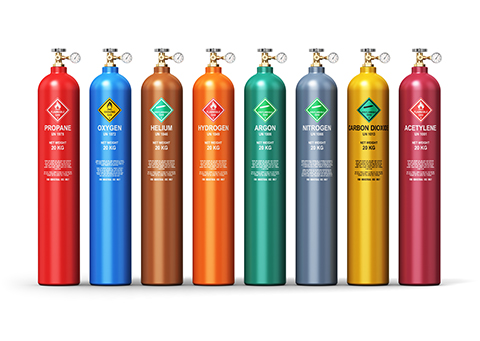

In today's digital security era, people's awareness of personal safety is deepening, and various detection technologies are also booming in the tide of the times. Gas detection technologies have their own strengths. Some can quickly lock the target gas; some can carefully analyze every molecule of the gas.
However, these technologies have their own shortcomings. Some have poor anti-interference capabilities, and some can only detect a few specific types of gases. Next, let's explore the merits and demerits of these gas detection technologies and see which one is the real leader in the battlefield of ensuring our breathing safety.
1. Catalytic combustion sensor
Catalytic combustion sensors use the heat changes generated when combustible gas burns on the catalyst surface to detect gas concentration. When the gas passes through the catalyst, if the gas is combustible, it will burn under the action of the catalyst, generating heat, which will cause resistance changes.

Advantages: Low cost, easy to manufacture and maintain. Good selectivity for most combustible gases.
Disadvantages: Can only detect combustible gases, not toxic gases. Sensitive to temperature, humidity and pressure changes.
2. Electrochemical sensor
Working principle: Electrochemical sensors are based on the redox reaction of the gas to be measured on the electrode, which causes the current to change. The sensor usually consists of two electrodes and an electrolyte. When the gas enters the sensor, it reacts on the electrode, causing the current to change.

Advantages: Can detect specific gases such as carbon monoxide and hydrogen sulfide. Linear output, low power consumption.
Disadvantages: Sensitive to temperature and humidity changes. Requires regular calibration and maintenance.
3. Infrared sensor
Working principle: Infrared sensors use the absorption characteristics of different gases to infrared light of a specific wavelength. When infrared light passes through a gas, it is absorbed, and the intensity of the transmitted light is inversely proportional to the gas concentration.

Advantages: High reliability, good selectivity, high accuracy, long life.
Disadvantages: High initial cost. Requires regular calibration.
4. Semiconductor sensor
Working principle: Semiconductor sensors use the surface adsorption or reaction generated when metal oxide materials interact with gases to cause changes in conductivity or volt-ampere characteristics. When gas molecules are adsorbed on the surface of the semiconductor, its resistance value will change.

Advantages: Low cost, suitable for combustible gas leak detection in homes and factories. High sensitivity, fast response, small size, light weight, easy to integrate, intelligent
Disadvantages: Sensitive to changes in temperature and humidity. Performance may deteriorate after long-term use.
5. Thermal conductivity sensor
Working principle: Thermal conductivity sensor uses the difference in thermal conductivity of gas to detect gas concentration. When gas passes through the thermal conductivity cell, it absorbs or dissipates heat, causing thermal conductivity changes, thereby causing temperature changes.

Advantages: No oxygen supply is required, suitable for high-concentration combustible gas detection. Good stability and long life.
Disadvantages: More effective for low molecular weight gases with high thermal conductivity. Low applicability for detecting toxic gases.
6. Laser absorption spectroscopy (TDLAS) technology
Working principle: TDLAS technology is based on the Lambert-Beer law, that is, the measured component absorbs light of a specific wavelength, and the absorption intensity is proportional to the concentration of the component. The gas concentration is determined by measuring the attenuation of the laser after passing through the gas.

Advantages: high precision, strong anti-interference ability. Can detect multiple gases at the same time.
Disadvantages: high initial cost, complex equipment. High maintenance cost.
After this comparison, we found that each type of gas detection technology has its own unique charm and indispensable role. Although they each have their shortcomings, it is these different advantages and characteristics that together weave a network to protect our breathing safety. In this battle of gas detection technology, there is no absolute king, only partners who are constantly improving and complementing each other, jointly guarding every breath of fresh air we take.
Share